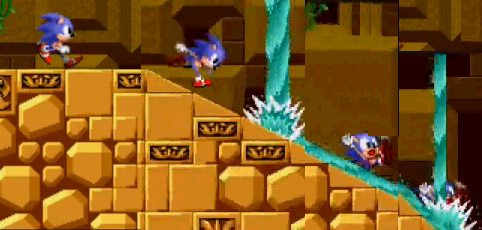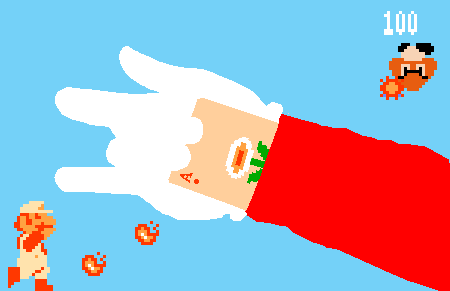Appraising the Art of Combat pt.5
 Saturday, January 15, 2011 at 9:27PM
Saturday, January 15, 2011 at 9:27PM One final thing to keep in mind when evaluating the combat of a video game is the risk-reward of player actions. Though the gameplay mechanics and core dynamics may govern which actions are counters, the gamestate gives context to those actions. The same move can be overpowered in one situation or pathetically useless in another. Some games are designed with specific features to significantly affect the risk-reward balance or context of actions based on how much a player is winning or losing. There's a good reason why a design would want to do this. But first, we need definitions.
Piggybacking off of this excellent article by David Sirlin, I present the following terms.
- Slippery Slope is when "falling behind causes you to fall even further behind." ~Sirlin. Falling further behind usually means a loss of key resources/abilities. Sometimes referred to as positive feedback.
- Perpetual Comeback is a feature "in which being behind [or disadvantaged] actually gives you an advantage." ~Sirlin. Sometimes referred to as negative feedback or comeback mechanics.

Watch your step Sonic! It's a slippery slope.
Consider two main ways to create slippery slope gameplay. When a player falls into a disadvantaged situation, if the player loses mechanics, viable options, or resources they'll be doubly disadvantaged. With less to work with, the double disadvantaged player will be less capable of preventing the next attack thus slipping further behind. In other words, games that feature decay dynamics can easily facilitate slippery slopes. Such games include Chess, StarCraft, and Advance Wars.
Sirlin gives examples of "limited slippery slope" that start and end so quickly, they don't have a chance to snow ball into significant disadvantages. I prefer that we don't use the term slippery slope for examples so minute. Like elegant solutions and nuanced mechanics, we must use judgement to determine slippery slopes even if doing so introduces some subjectivity to the discussion. Otherwise, almost any disadvantage can be viewed as a slippery slope.
Because the slippery slope merely refers to the relative widening of the gap between players, the other way to create a slippery slope is to give a player additional advantages for earning a slight advantage. In other words, instead of the other player getting weaker and less capable of fighting back, the disadvantaged player's abilities stay the same while the advantaged player gets stronger. "The rich get richer." Examples include EX meters in Street Fighter 4, powerups in Bomberman, grabbing coins and item boxes in Mario Kart, and the COD:Blops game type Gun Game.
When a game has too steep of a slippery slope, small leads at the beginning of match can easily snowball into a large game winning lead. Often times, competitors don't even play these games to the end. With a hand shake, a toppled king, or a "gg," losers of a match recognize when they're beat long before they lose by the game rules. (perfect example here. StarCraft 2 match with commentary) So you have to ask yourself, why bother designing/playing a long game when the victor is decided early on? How significant are a losing player's actions and choices if there's really no chance of coming back and winning?

Mario's got an Ace up his sleeve! I smell a comeback!
To keep things interesting from start to finish (ie. all players can win), designers can employ comeback mechanics/features. These elements of design give losing players certain advantages to even things out, but this doesn't mean they're guaranteed to rocket back into first place. In all the games I've played, comeback advantages can be squandered, misused, or countered just like any move. If successful, comeback mechanics are generally designed to greatly reduce the gap between players.
It's important to understand slippery slope and comeback design because of how they affect viable strategies and options. Try watching a sports game with the score covered up or a fighting game match with the health bars concealed. Without this information, it becomes much harder to understand why players make certain decisions or what's going through their minds. Without this information, we can easily become disengaged with the active combat. If you can't accurately judge the risk-reward of actions, then you're missing the point.
The following are examples of comeback mechanics...
Give and You Shall Receive. The same attacks that you use on the opponent can be used directly as fuel for a counter attack.
- Tetris Attack (see video). Attack by making matches to send garbage blocks to the opponent. The thicker the block, the more a player has to work to eliminate it. But with some relatively simple rearranging, garbage blocks can help the disadvantaged player create large chains relatively easily to send an attack right back.
- Tetris DS (see video). Garbage blocks sent to opponents always have a hole. Otherwise, the lines would disappear Tetris style. Because the garbage blocks push up from the bottom of the opponent's field, one has to work through their own Tetrominoes to begin working on the garbage. When a player gets to the garbage, the holes can easily be filled to send the trash right back.
- Meteos (see video). In this action puzzle game, you attack by pushing blocks up off the top of your screen to weigh down your opponent. If you catch the garbage attack in mid air, you can send it back and then some. Things get really interesting when you toss ticking time bomb type items back and forth.
What Doesn't Kill You Only Makes You Stronger. Taking damage, hits, or other kinds of disadvantages indirectly feeds a comeback mechanic (generally through some kind of abstract dynamic/meter).
- Advance Wars Series (except Days of Ruin) Co powers. Mostly when you take damage, your CO meter will fill. Build enough up and you can unleash a powerful CO attack. If you strategize well, you can gain a small advantage while taking lots of damage, use your CO power, and take an even bigger advantage. Advance Wars: Days of Ruin fixed this odd and game swaying design.
- Street Fighter 4 Series Ultras. By taking damage or absorbing attacks (most likely with a focus attack) your revenge gauge builds. At 50% gauge you can use your Ultra attack. But at 100%, the same Ultra attack does much more damage. So when you've nearly lost a match, if you land your ultra, you can even things out again.
Table Turners. When your particular disadvantaged state is swapped with the opponent's advantaged state.
- DigiDrive. All the items except the attacking items allow a losing player to comeback to various degrees. But the Switch item takes all of the opponent's stored attacking potential and swaps it with yours. So if you have little left to attack or defend with, you can always try to get this table turning time.
Ace Up the Sleeve. You have access to these powerful/comeback mechanics at any time. Their use is generally limited because they're difficult to pull off.
- Super Mario Strikers Charged. In this soccer-hockey-hybrid, players maneuver the field to make passes, tackles, and shots on the goal. Each goal nets one point (as you might expect). However, each team captain has the ability to change the ball to activate a Mega Strike. Do this just right and you can launch up to 6 balls at the opponent's goal. The opponent might block them all or miss a few. But when you're down to the wire, this comeback mechanic may be the only thing keeping you in the game.
- Soul Calibur. Ring outs in this fighting game are 100% deadly. Technically, you have access to this tactic as long as you and the opponent are near a ledge.
In part 6 we'll look at where slippery slope and comeback mechanics meet free-for-alls.

